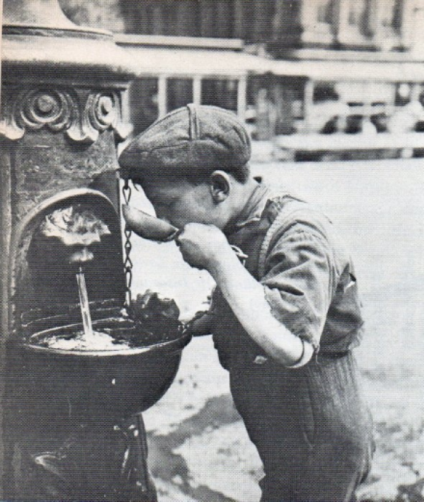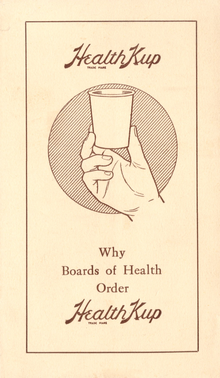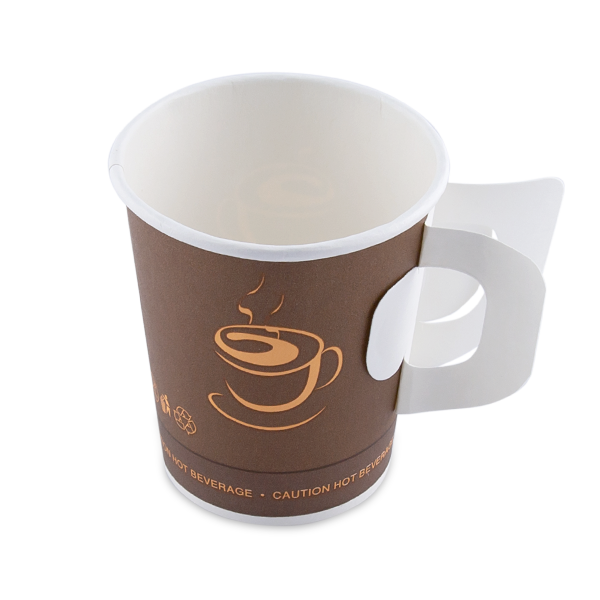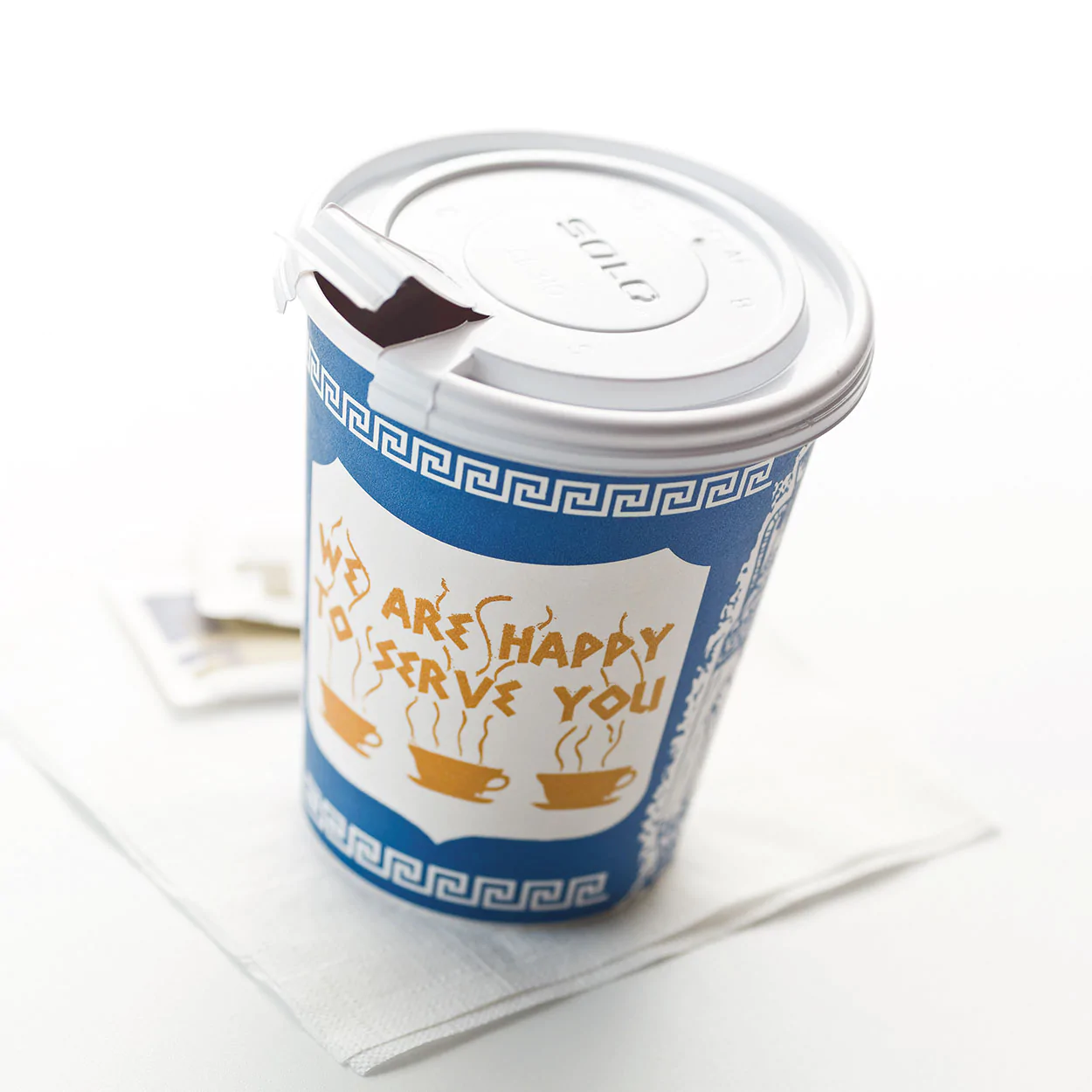The Surprising and Germ-laden Origins of the Disposable Coffee Cup
Written by Signe Langford
From its beginnings in public health to the future innovations, we look at the history of the take-out coffee cup in two parts.
To trace the history of the take-out coffee cup, we must go back to a time even before take-out coffee. Up until the mid-20th century, outside of the home, water was the beverage most available to city dwellers. In the 1900s, builders of urban infrastructures – urged on by the Temperance movement – started to erect public water fountains, many outfitted with a faucet and communal tin cup to drink from.
Go back further, and you’ll find folks dipping a shared cup made of tin, ceramic or wood into a bucket or barrel of water that was brought around by a seller; but that was before germs were widely understood. Fun fact: The American Temperance movement (1920 to 1933) encouraged folks to eschew their daily ale in favour of water, which was brought around and served from a wagon with a communal cup, and it’s where we get the expression, “on the wagon” meaning sobriety.

In the late 1860s, French chemist Louis Pasteur, would put forth his findings on microbes and bacteria – “germ theory” – and at that time it was just that, a theory still not widely accepted. But, in Boston, a lawyer and inventor, Lawrence Luellen, was paying attention, and in an effort to create a safer drinking vessel, in 1907 he made the first disposable cup and named it “The Health Kup”. It was a flimsy thing made of unwaxed paper, and it didn’t garner much attention until the “Spanish” influenza pandemic of 1916 – 1918, when sharing a cup or tin dipper was suddenly recognized as potentially life-threatening. Now most of the world knows this cup by the name Luellen would give it five years on: “Dixie”. They didn’t have lids yet, because they weren’t a product designed for convenience or for carting around a hot beverage. They were thin and didn’t have a water-proof coating. Much like those fragile cone-shaped cups we still find in the dispenser by the office water cooler, they were intended to keep folks healthy, to be used once, in the moment, usually for water, then discarded.

The evolution of the take-out cup advances almost neck and neck with the evolution of take-out coffee. Thin paper is fine for water, not so much for a hot beverage that would be sipped at a leisurely pace. It wouldn’t be until the 1930s when we see new design advances made on the simple, paper cup; the thin paper shell was no match for the heat of freshly poured coffee and holding onto the cup was challenging, so in 1936, cups with pull-out paper handles were introduced – this design could still be found in vending machines as late as the 1970s – and it wouldn’t be until the 1950s that cups were given lids. In the 1950s, waxy coatings were added to water-proof the paper.

Designed to accommodate the latest vending machines – invented in 1947 – and coffee shops, advances in cup design kept coming, including tweaks to improve heat retention, durability, user satisfaction, and water-proofing; concerns about environmental impact would come much later. Lid design had to take other things into consideration, such as drinking openings and how to accommodate all that frothy milk foam the 1980s would bring – thank you, Starbucks! The late 1960s saw the invention of the plastic lid with a tear-able drinking opening. And the curious significance of the tear-able lid? It meant the industry recognized that folks weren’t waiting to get where they were going to drink the coffee; they were sipping on the move, while walking, commuting, and driving. Still, it would be another 10 years before any significant redesign to the tear-away lid, with the introduction of the pullback tab with locking mechanism in 1975.
Up into the 1960s, cups were still being made from thick paper; convenient, but not terribly heatproof, and that’s when William Dart (Dart Container Corporation, Michigan) made a cup from expandable polystyrene or “foam”. It was lightweight, completely liquid-proof, and insulating; it kept the beverage hot longer, and hands cool, but come the environmental movement, it would fall into disfavour.
Cups were also pretty bland until the early 1960s; plain white, no colour, no logos, no wording, until U.S. inventor, Leslie Buck, designed the first decorated cup for Sherri Cup out of Connecticut. He named it the “Anthora” it bore a blue and white Grecian design and the words; “We are happy to serve you”, and over the decades it’s become a symbol not just of to-go coffee, but of New York City where the cup is ubiquitous. In fact, the cup has become a New York City icon with a website – www.nycoffeecup.com – selling nothing but iterations of it, including, ironically, a ceramic version.

In Canada, 1964 would ring in the age of Tim Horton’s, and in the U.S., 1964 was also the year American convenience store chain 7-Eleven began offering coffee to go. North Americans already had a well-entrenched taste for drinking coffee on the move, but it would only get hotter and evolve in unimagined ways.
Join us for Part Two, when we look at the present and future of coffee cup and lid design.

